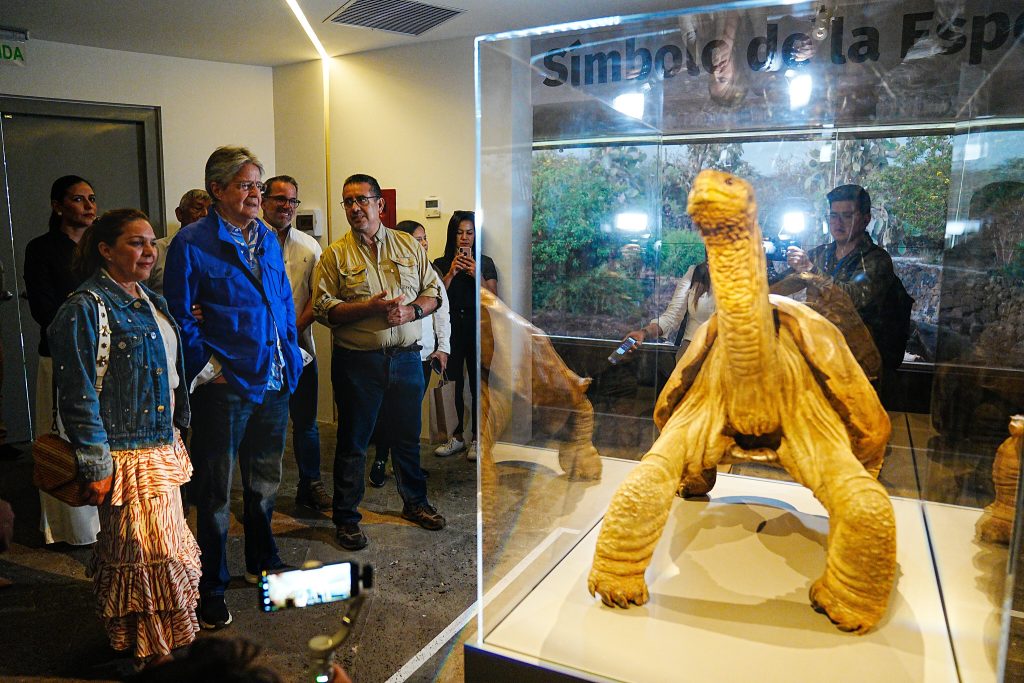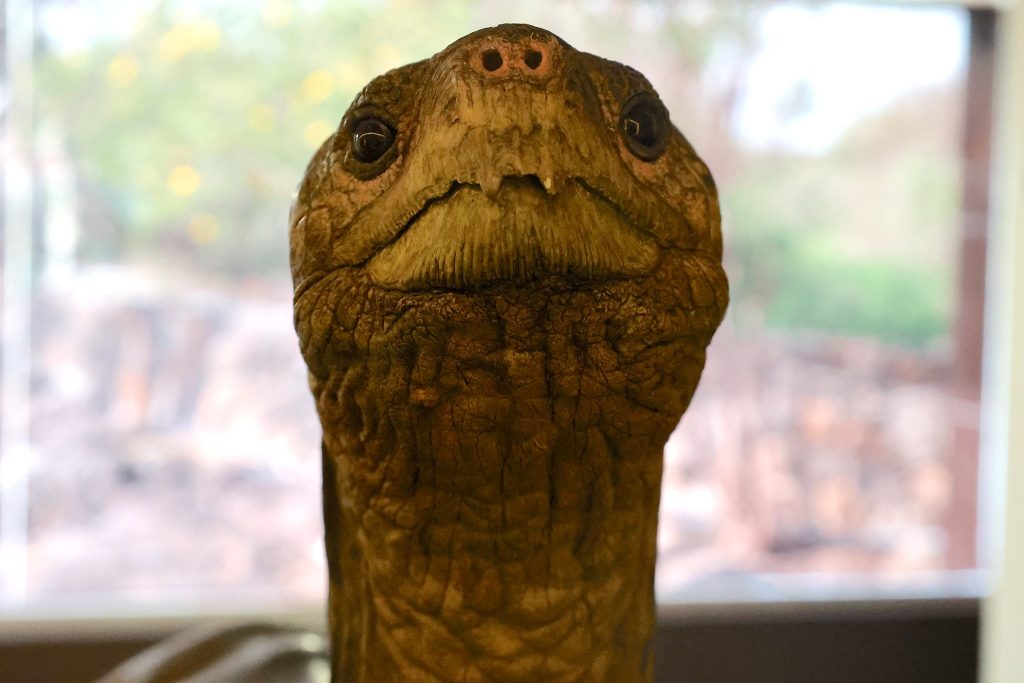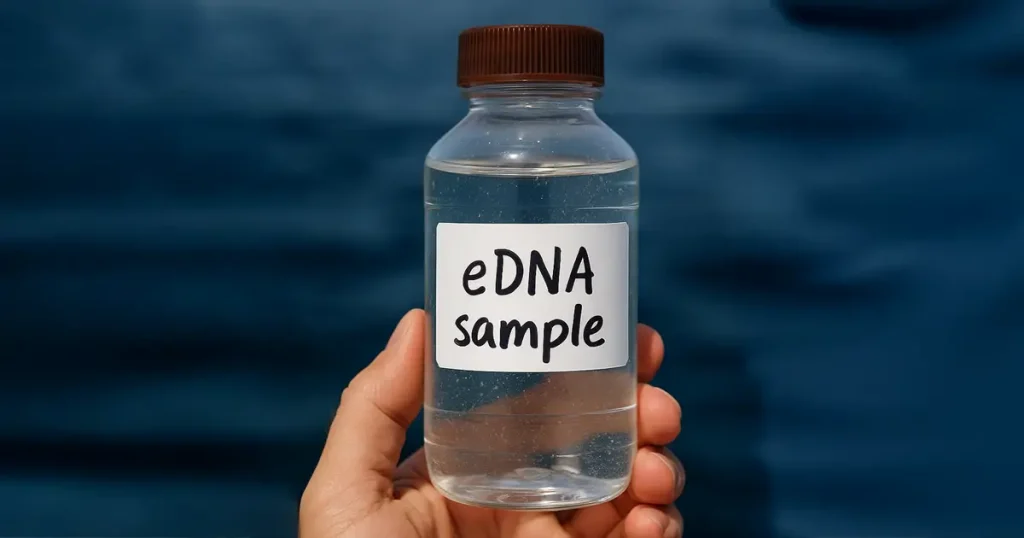Lonesome George Exhibit Hall Reopens its Doors to Visitors
Date: 10/25/2022
//Versión en español abajo.//

The Symbol of Hope Hall, where the taxidermied body of Lonesome George is exhibited, reopened its doors after 20 days of renovation of the site. His body is preserved behind a special acrylic that protects it from ultraviolet rays in a chamber with the appropriate light, temperature, and humidity conditions for its preservation.
With this adaptation, tourists can have a 360-degree view of the symbolic chelonian George, whose body is shown at its maximum height, which reaches 1.52 meters, with its neck and limbs extended.
The Symbol of Hope Hall is located on the interpretive trail “La Ruta de la Tortuga” of the Galápagos National Park Directorate; Galápagos Conservancy financed this refurbishment, and it was carried out under strict parameters established by the expert taxidermist George Dante, responsible for the taxidermy process of Lonesome George that lasted almost three years.
Even ten years after his death, Lonesome George is one of the most famous reptiles in the world for having been the last surviving individual of his species Chelonoidis abingdoni, from Pinta Island. The General Director of Galápagos Conservancy, Washington Tapia, led this process and said that “every effort and resource was made to ensure the ideal conditions to maintain the taxidermied body of Lonesome George, a symbol of the efforts to conserve the endangered species of Galápagos”.
In 1971 a group of scientists visited Pinta Island and coincidentally found the only giant tortoise that inhabited the island then. The following year, in 1972, a new expedition to Pinta was organized to search for this specimen, which was transferred to the Galápagos National Park Breeding Center and named Lonesome George. In his new home, the chelonian lived the rest of his life until he died of natural causes on June 24, 2012, leaving no descendants.

Sala de exhibición del Solitario George reabre sus puertas a los visitantes
La Sala Símbolo de la Esperanza, donde se exhibe el cuerpo taxidermizado del Solitario George, reabrió sus puertas después de 20 días de renovación del sitio. Su cuerpo se conserva detrás de un acrílico especial que lo protege de los rayos ultravioleta, en una cámara con las condiciones de luz, temperatura y humedad adecuadas para su preservación.
Con esta adecuación, los turistas pueden tener una vista de 360 grados del quelonio emblemático George, cuyo cuerpo se muestra en su máxima estatura, que alcanza los 1.52 metros con su cuello y extremidades extendidas.
La Sala Símbolo de la Esperanza se encuentra en el sendero interpretativo “La Ruta de la Tortuga” de la Dirección del Parque Nacional Galápagos, su readecuación fue financiada por Galápagos Conservancy y realizada bajo estrictos parámetros establecidos por el experto taxidermista George Dante, responsable del proceso de taxidermia del Solitario George que duró casi tres años.
Aún después de diez años de su muerte, el Solitario George es uno de los más famosos reptiles en el mundo por haber sido el último individuo sobreviviente de su especie Chelonoidis abingdoni de la isla Pinta. El Director General de Conservando Galápagos, filial de Galápagos Conservancy, Washington Tapia, lideró este proceso y dijo que “se pusieron todos los esfuerzos y recursos necesarios para asegurar las condiciones ideales para mantener en buen estado el cuerpo taxidermizado del Solitario George, símbolo de los esfuerzos por conservar las especies amenazadas de Galápagos.”
En 1971 un grupo de científicos visitaron la Isla Pinta y coincidencialmente encontraron a la única tortuga gigante que habitaba la isla en ese entonces. Al año siguiente, en 1972, se organizó una nueva expedición a Pinta para buscar a este espécimen que fue trasladado el Centro de Crianza del Parque Nacional Galápagos y se lo llamó Solitario George. En su nuevo hogar, el quelonio vivió el resto de su vida hasta que falleció por causas naturales el 24 de junio de 2012, sin dejar descendencia.



